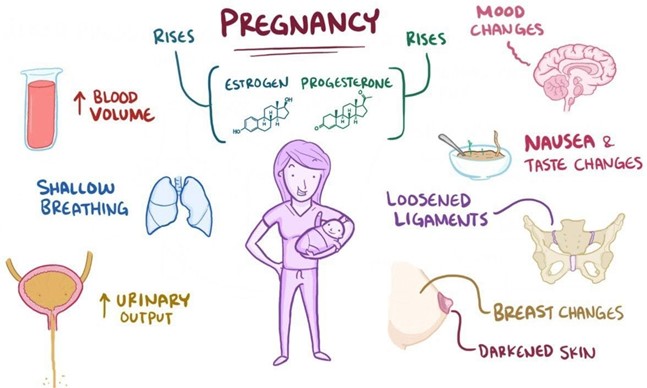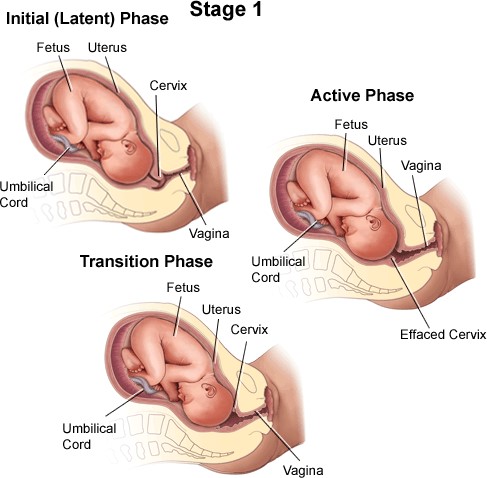On the first prenatal visit, the woman's cervix feels softened upon examination. The nurse records this finding as: Select one:
Homans' sign.
Chadwick's sign.
Goodell's sign.
McDonald's sign.
The Correct Answer is C
Choice A Reason: Homans' sign. This is an incorrect answer that refers to a different sign that is not related to pregnancy. Homans' sign is a sign of deep vein thrombosis (DVT) that occurs when there is pain or discomfort in the calf or popliteal region when the foot is dorsiflexed. Homans' sign can be elicited by passive or active movement of the foot, but it is not a reliable or specific indicator of DVT.
Choice B Reason: Chadwick's sign. This is an incorrect answer that refers to a different sign of pregnancy that affects the color of the cervix, not the texture. Chadwick's sign is a sign of pregnancy that refers to the bluish or purplish discoloration of the cervix, vagina, and vulva due to increased blood flow and congestion. Chadwick's sign can be observed by visual inspection of the cervix during the first prenatal visit, usually around 6 to 8 weeks of gestation.
Choice C Reason: Goodell's sign. This is because Goodell's sign is a sign of pregnancy that refers to the softening of the cervix due to increased vascularity and edema. Goodell's sign can be detected by digital examination of the cervix during the first prenatal visit, usually around 6 to 8 weeks of gestation.
Choice D Reason: McDonald's sign. This is an incorrect answer that refers to a different sign of pregnancy that involves the angle of the uterus, not the cervix. McDonald's sign is a sign of pregnancy that refers to the ease of flexing the body of the uterus against the cervix, which creates an angle of 90 degrees or less. McDonald's sign can be assessed by bimanual examination of the uterus during the first prenatal visit, usually around 7 to 8 weeks of gestation.

Nursing Test Bank
Naxlex Comprehensive Predictor Exams
Related Questions
Correct Answer is A
Explanation
Choice A Reason: Latent phase of the first stage of labor. This is because this phase is characterized by mild and irregular contractions, slow cervical dilation (up to 4 cm), minimal cervical effacement (up to 40%), and minimal discomfort or pain. The latent phase is also known as the early phase or preparatory phase of labor.
Choice B Reason: Transition phase of the first stage of labor. This is an incorrect answer that describes a different phase with different characteristics. The transition phase is marked by strong and frequent contractions, rapid cervical dilation (from 8 to 10 cm), complete cervical effacement (100%), and intense discomfort or pain. The transition phase is also known as the terminal phase or acceleration phase of labor.
Choice C Reason: Perineal phase of the second stage of labor. This is an incorrect answer that refers to another stage and phase with different features. The second stage of labor begins with complete cervical dilation (10 cm) and ends with delivery of the baby. The perineal phase is the last part of the second stage, where the baby's head crowns and emerges through the vaginal opening.
Choice D Reason: Active phase of the first stage of labor. This is an incorrect answer that indicates another phase with different atributes. The active phase is characterized by moderate and regular contractions, progressive cervical dilation (from 4 to 8 cm), increased cervical effacement (from 40% to 80%), and increased discomfort or pain. The active phase is also known as the middle phase or dilatation phase of labor.

Correct Answer is A
Explanation
Choice A Reason: Two arteries, one vein. This is because two arteries and one vein are the normal components of the umbilical cord, which is a structure that connects the fetus to the placenta and provides blood circulation between them. The umbilical cord carries oxygenated blood from the placenta to the fetus through the umbilical vein, and deoxygenated blood from the fetus to the placenta through the umbilical arteries.
Choice B Reason: Two veins, one artery. This is an incorrect answer that indicates an abnormal anatomy of the umbilical cord, which is known as single umbilical artery (SUA). SUA is a condition where there is only one umbilical artery instead of two, which can reduce blood flow and oxygen delivery to the fetus. SUA can be associated with congenital anomalies or growth restriction in some cases.
Choice C Reason: Two veins, two arteries. This is an incorrect answer that indicates an abnormal anatomy of the umbilical cord, which is known as double umbilical vein (DUV). DUV is a condition where there are two umbilical veins instead of one, which can increase blood flow and oxygen delivery to the fetus. DUV can be associated with fetal overgrowth or polycythemia in some cases.
Choice D Reason: One artery, one vein. This is an incorrect answer that indicates an abnormal anatomy of the umbilical cord, which is also known as single umbilical artery (SUA). SUA is a condition where there is only one umbilical artery instead of two, which can reduce blood flow and oxygen delivery to the fetus. SUA can be associated with congenital anomalies or growth restriction in some cases.
Whether you are a student looking to ace your exams or a practicing nurse seeking to enhance your expertise , our nursing education contents will empower you with the confidence and competence to make a difference in the lives of patients and become a respected leader in the healthcare field.
Visit Naxlex, invest in your future and unlock endless possibilities with our unparalleled nursing education contents today
Report Wrong Answer on the Current Question
Do you disagree with the answer? If yes, what is your expected answer? Explain.
Kindly be descriptive with the issue you are facing.
